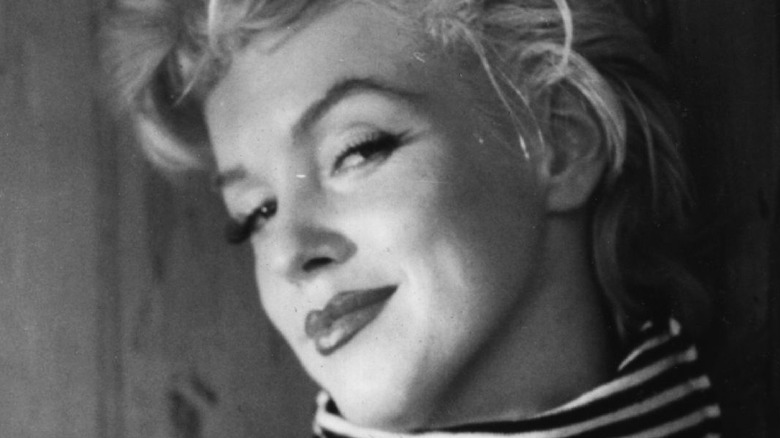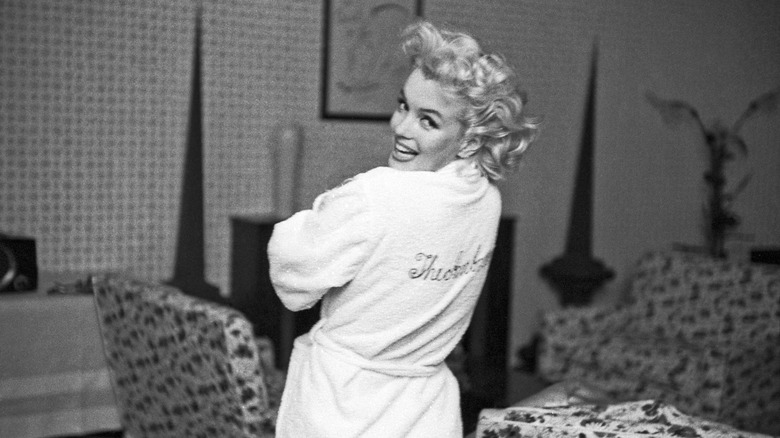The Marilyn Monroe Myth You Should Stop Believing
The word "icon" is flung around quite a lot these days, but perhaps with the exception of Elvis or The Beatles, there is no greater icon of the last century than Marilyn Monroe. The greatest evidence for this can best be found in the work of Andy Warhol, whose "Marilyn Diptych" – the title of which, excluding her surname, suggests her iconicity — became the centerpiece of the Pop Art movement. This spotlight seemed to predict the actress's transfiguration from a typical performer into an instantly recognizable brand in her own right.
According to the Tate, Warhol first started printing his Monroe portraits in 1962, just a few months after her untimely death stunned the world. Since then, Monroe's synonymity with glamor has been used to sell everything from aspirational products like Chanel No. 5 — which, according to the ad, she claimed to wear to bed (via YouTube) – to everyday staples such as Snickers bars (per YouTube).
But while Monroe is an icon, she is also a contentious figure. While some critics in recent years argue that she was fundamentally a "proto-feminist" (via The Guardian), others claim that she is a poor role model for today's generation of young women (via The Collegian). But to get a clear sight of who Monroe really was, it is first necessary to burst the bubble of one of the most commonly held myths about her.
Did Marilyn Monroe really wear a size 12 dress?
Everyone loves a Marilyn Monroe fact that subverts expectations. For example, a popular photo online shows her tackling James Joyce's "Ulysses," one of the most difficult works of literary modernism. But the most famous tidbit about the Hollywood legend concerns her size; specifically, that her dress size was 12 (16 in the United Kingdom). The ubiquity of this fact on the internet suggests that there is something appealing about it. Perhaps by being a larger dress size than many of us might expect, our image of Monroe changes. That the most glamorous woman of the century was a typical dress size humanizes her for some. For others, Monroe being a size 12 suggests something about the severe demands that today's society puts on its actresses and models in comparison to the golden age of Hollywood.
But as Forbes recently pointed out, today's dress sizes are much larger than they were 50 years ago. Why? Because of "size inflation" — the habit of clothes retailers gradually increasing the dimensions of each dress size over time, also known as "vanity sizing." It is a practice that Forbes claims has been used to flatter the egos of potential customers for the sake of a sale, but which few people know about (they even had to introduce two new smaller sizes, 0 and 00, to account for the increase). In reality, Monroe was more likely a 6 or an 8 in today's sizes.

